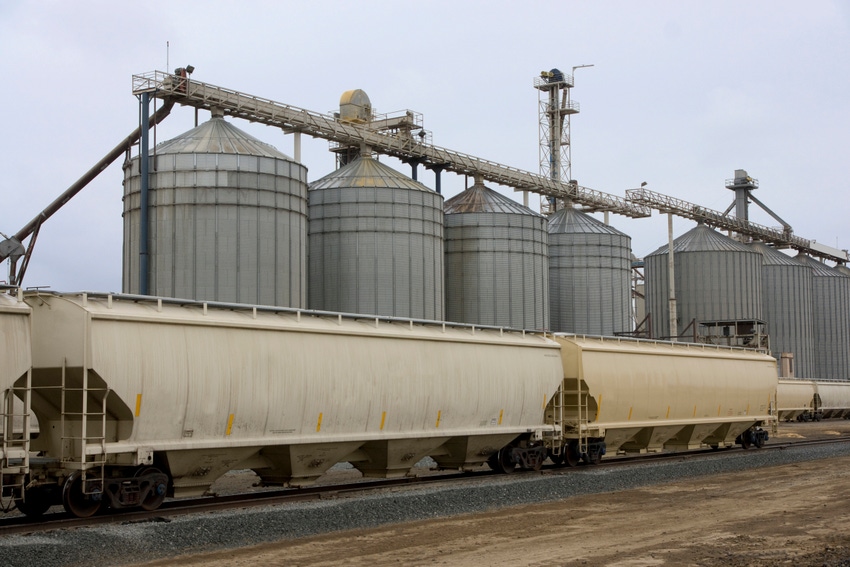CoBank report reveals volatility in basis and carry could threaten elevators’ profit potential.

Grain elevators and end users are navigating heightened market volatility caused by uncertainty over the size of this fall’s corn harvest. After U.S. corn farmers suffered historic planting delays from nonstop rains this spring, the crop is late in maturing, especially in states across the eastern Corn Belt. Those delays could lead to major losses in crop production this fall and raise the stakes for grain merchandisers as well as ethanol producers and livestock feeders, according to a new report from CoBank’s Knowledge Exchange division.
“Volatility in corn basis and carry in the futures market has plagued the market since spring, raising concerns over grain elevators’ ability to acquire bushels and profit on this fall’s corn harvest,” said Tanner Ehmke, manager of CoBank’s Knowledge Exchange.
The biggest corn planting delays occurred in Illinois, Indiana, Michigan, North Dakota, Ohio, South Dakota and Wisconsin. Based on the most recent weekly crop development data, the eastern Corn Belt continues to struggle with the greatest delays in crop development, which has been a constant concern throughout the growing season. Late development raises fears that freezing temperatures may kill crops before they can be harvested.
Uncertainty over corn availability this fall has injected fear and volatility into the market, complicating forecasts on profitability for grain elevators. Through May and June, basis in central Ohio rallied 25 cents to the highest level in five years before plunging nearly 50 cents by mid-August.
In the futures market, the December-July carry for corn fell from its peak of 32.75 cents per bushel in May to 4.5 cents per bushel in June, then rallied back to 27.5 cents per bushel in August. At an estimated cost of 3 cents per bushel per month for elevators to store corn, the seven-month December-July carry needs to be at least 21 cents per bushel per month for the elevator to break even.
After the U.S. Department of Agriculture’s August crop report, Ehmke noted that corn prices again plunged to levels not seen since spring. While USDA-NASS’s forecast of 13.9 billion bushels of total corn production on an average national yield of 169.5 bushels per acre was down significantly from last year’s harvest of 14.4 billion bushels on a 176.4 bushels per acre yield, the prediction was well above industry experts’ expectations. On Aug. 23, the Pro Farmer Midwest Crop Tour followed with a much lower estimate of 13.4 billion bushels with an average yield of 163.3 bushels per acre after sampling corn and soybean fields across the Corn Belt.
“That doesn’t mean volatility or uncertainty have left the room,” he said. Crop conditions and delayed maturity remain at concerning levels this late in the growing season, and the crop now has a greater risk of an early frost. The historic lateness of this year’s crop means that a normal or early frost in October could severely crimp farmers’ yields and reduce harvested acreage.
With the high level of market volatility, elevators could experience either extreme profits or losses for new crop corn. Some elevators could potentially face an even more difficult issue—lack of access to corn. In corn-deficit areas, elevators will be forced to compete for local bushels or look for corn outside the region.
“If farmers are reluctant sellers of grain at harvest, grain elevators and end users might have to get creative to pry corn loose from farmers’ hands,” Ehmke said.
Elevators in the eastern Corn Belt have a much slimmer chance of buying cheap basis this fall at harvest. Grain handlers will most likely need to compete for bushels in regions that are corn-deficit. If old-crop bushels cannot be acquired ahead of harvest and if new-crop bushels are not secured at harvest, elevators stand to face a tough marketing year ahead with mergers and acquisitions in the region increasingly likely.
“Elevators that buy cheap basis stand to profit from the volatility while elevators that buy high basis face steep downside risk,” said Ehmke. “Weakness in basis could result if bushels are brought into a corn-deficient region and demand erodes as end users try to stem their financial losses.”
The widening spread between Ohio and Illinois creates a potential opportunity for grain handlers looking to profit from arbitrage. By moving corn from lower-priced regions like Illinois where inventories of old-crop corn are more abundant and new-crop yield potential is less concerning, elevators could profit, depending on the cost of rail transportation, the report noted.
While the uncertainty of corn availability is high in some regions, elevators may have the opportunity to profit on soybean basis, CoBank added. U.S. soybean inventories remain at record highs and the futures market is offering a strong carry. “Elevators that can buy cheap soybean basis and profit from storing soybeans will be on stronger footing to handle volatility in corn basis,” the report stated.
About the Author(s)
You May Also Like




.png?width=300&auto=webp&quality=80&disable=upscale)
